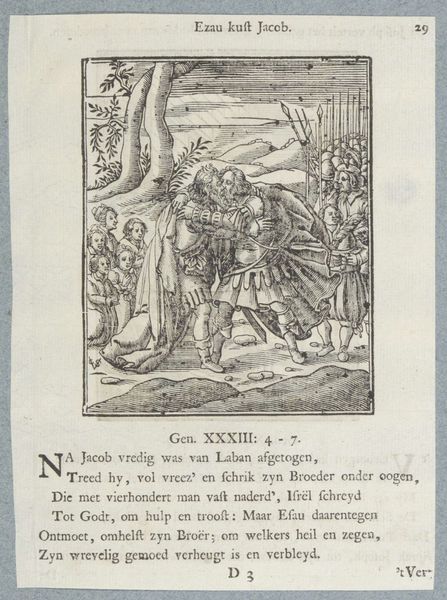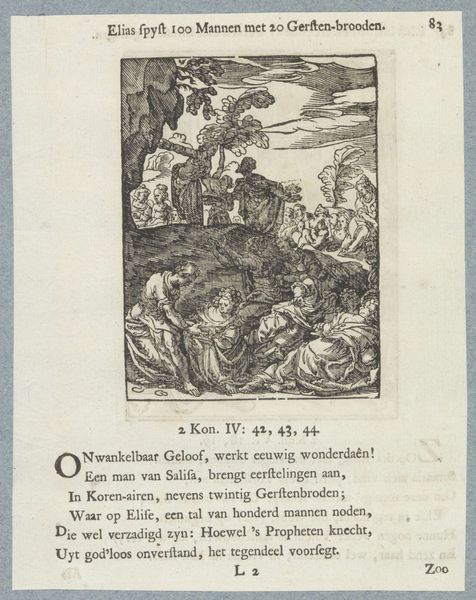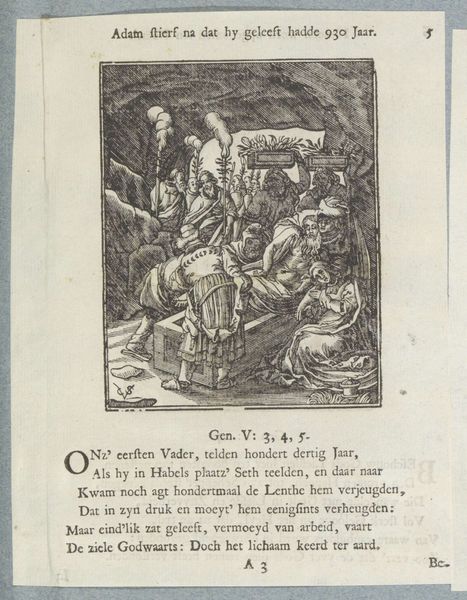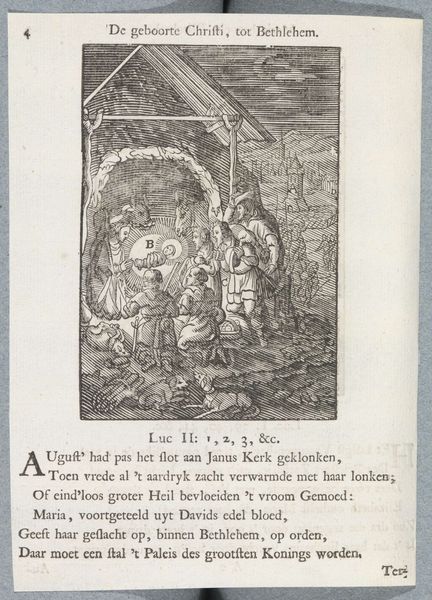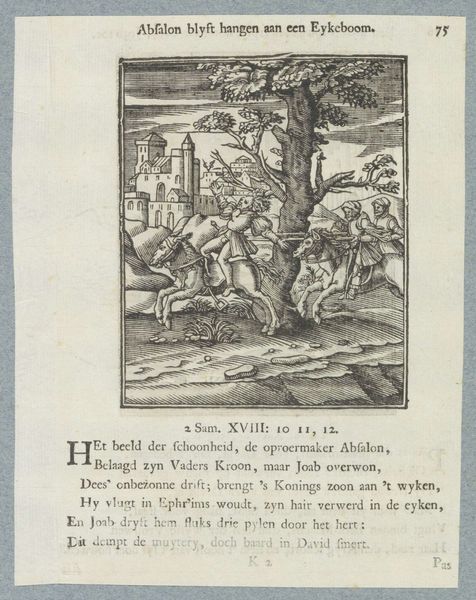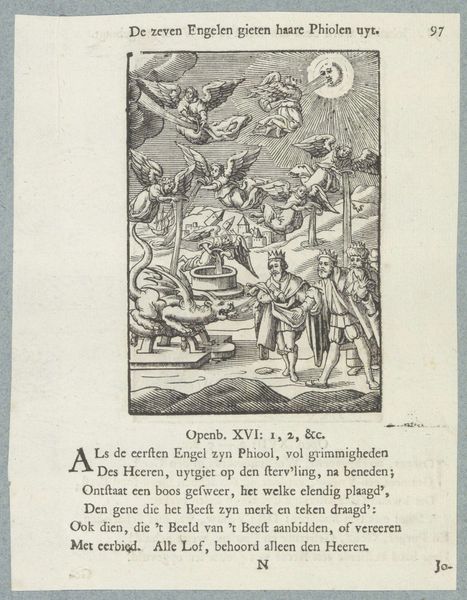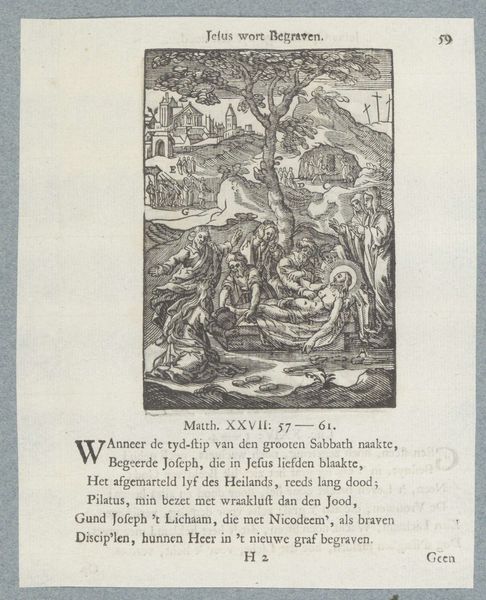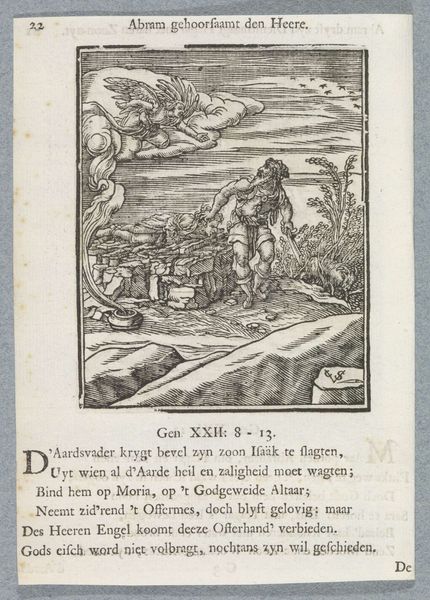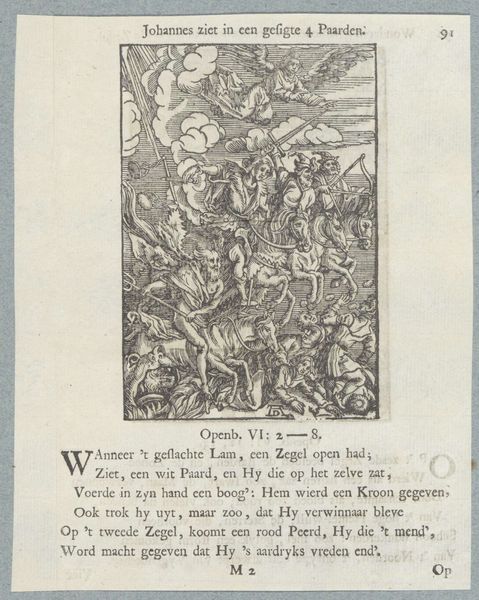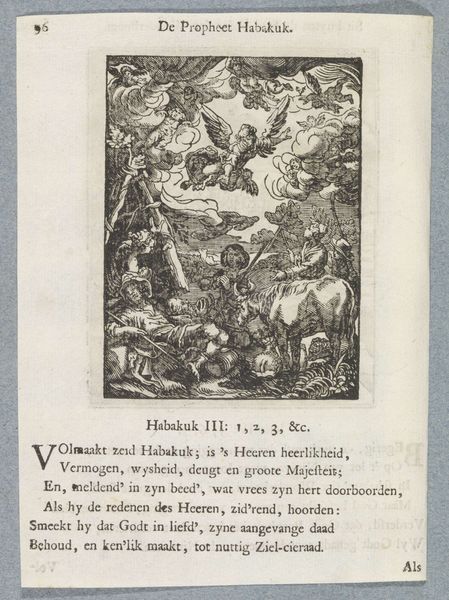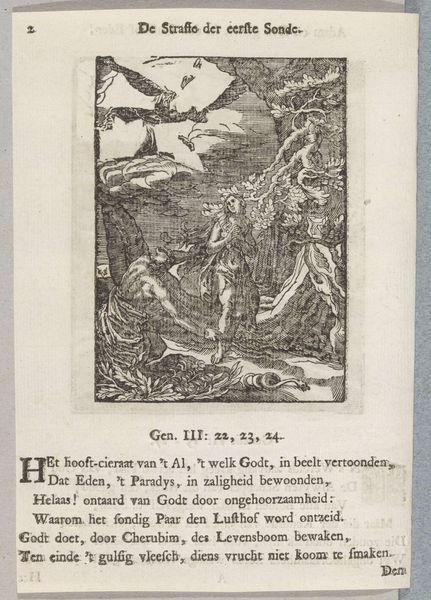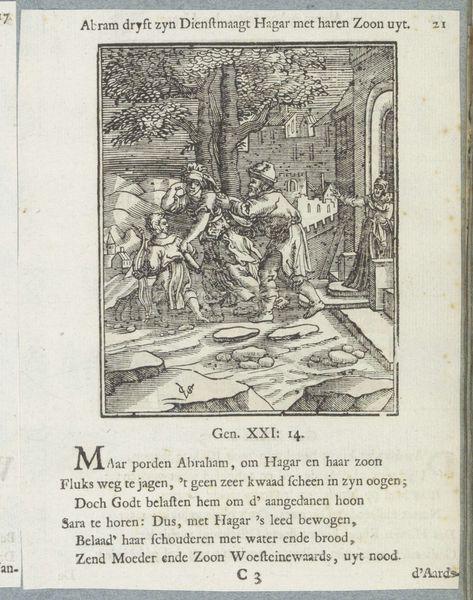
print, engraving
#
narrative-art
#
baroque
# print
#
landscape
#
figuration
#
engraving
Dimensions: height 112 mm, width 77 mm, height 168 mm, width 135 mm
Copyright: Rijks Museum: Open Domain
Curator: This engraving, "Parabel van de slechte herder," or "Parable of the Bad Shepherd," by Christoffel van Sichem II, likely created between 1645 and 1740, really leaps out with its drama and moral message. What are your immediate thoughts? Editor: My initial impression is tension, starkly captured in monochrome. There’s a frantic energy, and that predatory wolf—the textures!—draws the eye instantly. It feels like a moment ripped from a much larger, fraught narrative. Curator: Absolutely. It functions as an illustration, meant to be consumed alongside text – in this case, an extract from Ezekiel 34 in the Old Testament, denouncing wicked shepherds. The shepherd fleeing while a wolf attacks his flock is a strong indictment of neglectful leadership, often seen as representing societal or religious leaders failing their people. Editor: So, the fleeing shepherd isn’t just an individual failure but a symbol of institutional corruption and abuse of power? That resonates. Looking at it through that lens, the vulnerability of the sheep is amplified. Are we meant to empathize solely with the sheep or question their passivity, too? Curator: A productive question. Remember, this imagery operated within a very specific religious and political climate. In the context of the Reformation, it certainly could be seen as critical of established religious authorities. The visual language aligns with a broader trend of using easily accessible images to disseminate critiques. Editor: The landscape also strikes me; it seems less about pastoral serenity and more about exposing the precariousness of their environment. Those barren hills in the background aren’t very comforting. I’m also wondering how this parable was received at the time, especially by those in positions of power. Curator: Undoubtedly, it would have been contentious. Prints like these, widely distributed, fueled public debate and scrutiny. They gave voice to criticisms and offered a visual focus for discussions of social responsibility. Consider its production too. Engravings such as these made art and these ideas very accessible. Editor: Considering its accessibility and potent symbolism, it's interesting to consider how "The Parable of the Bad Shepherd" transcends its original context. Even today, the visual metaphor resonates powerfully. Curator: I agree. Analyzing it from a contemporary viewpoint reminds us that imagery from centuries ago can continue to stimulate introspection and social evaluation.
Comments
No comments
Be the first to comment and join the conversation on the ultimate creative platform.
